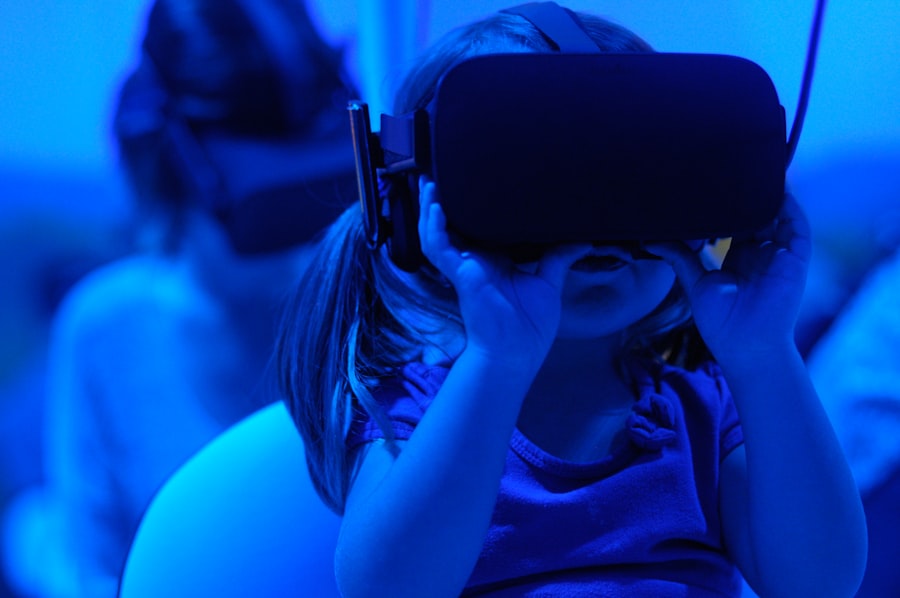KI, or Künstliche Intelligenz, refers to the ability of machines to simulate human intelligence, and its application in clothing style suggestions is revolutionizing how individuals approach their wardrobes. These systems leverage vast amounts of data to provide personalized recommendations that cater to individual tastes, preferences, and even body types.
By analyzing trends, user behavior, and social media influences, KI-based systems can curate outfits that not only reflect current fashion trends but also resonate with the unique identity of the wearer. The appeal of KI-driven clothing style suggestions lies in their ability to simplify the often overwhelming task of choosing an outfit. With countless options available in the market, many individuals find themselves struggling to make decisions about what to wear.
KI systems alleviate this burden by offering tailored suggestions that take into account various factors such as occasion, weather, and personal style. This technology not only enhances the shopping experience but also empowers users to express themselves more confidently through their clothing choices.
Key Takeaways
- KI-based clothing style suggestions are generated by artificial intelligence systems that analyze clothing items and provide personalized recommendations.
- KI systems analyze clothing items by using algorithms to identify patterns, colors, and styles, as well as considering individual preferences and body types.
- Personalized style recommendations from KI systems take into account factors such as personal style, body shape, and occasion, providing tailored suggestions for each individual.
- The application of KI in personalized style advice has revolutionized the fashion and clothing industry, offering a more efficient and personalized shopping experience for consumers.
- KI-driven wardrobe organization helps individuals to manage and optimize their clothing collections, providing suggestions for outfit coordination and maximizing the use of their wardrobe.
How KI Systems Analyze Clothing Items
Understanding Fashion Dynamics
By examining these characteristics, KI can categorize items into distinct styles and identify which pieces complement each other. This analytical approach allows for a deeper understanding of fashion dynamics, enabling the system to make informed recommendations based on user preferences.
Image Recognition Technology
Moreover, KI systems often incorporate image recognition technology to analyze clothing items visually. By scanning images of garments, these systems can identify key features and match them with similar items in a user’s wardrobe or available for purchase online.
Elevating Your Style Game
This capability not only streamlines the process of outfit coordination but also helps users discover new styles that they may not have considered otherwise. The combination of data analysis and visual recognition creates a powerful tool for fashion enthusiasts looking to elevate their style game.
Personalized Style Recommendations from KI Systems

One of the most exciting aspects of KI-based clothing style suggestions is their ability to provide personalized recommendations. By gathering data from user interactions—such as previous purchases, likes, and dislikes—these systems can create a comprehensive profile that reflects an individual’s unique fashion sense. This personalized approach ensures that the suggestions offered are not only relevant but also aligned with the user’s lifestyle and preferences.
Furthermore, KI systems continuously learn and adapt over time. As users engage with the platform, the algorithms refine their understanding of individual tastes, leading to increasingly accurate recommendations. This dynamic learning process means that users can expect fresh and exciting outfit ideas with each interaction.
Whether someone is looking for casual wear for a weekend outing or formal attire for a special event, KI systems can curate options that resonate with their personal style while keeping them on-trend.
The Application of KI in Personalized Style Advice
The application of KI in personalized style advice extends beyond mere outfit suggestions; it encompasses a holistic approach to fashion guidance. Many platforms now offer virtual stylists powered by AI that can engage in conversations with users to better understand their needs. These virtual assistants can ask questions about preferences, occasions, and even mood, allowing them to provide tailored advice that feels more like a conversation with a trusted friend than an algorithmic response.
Additionally, KI systems can analyze social media trends and influencer styles to keep users informed about the latest fashion movements. By integrating real-time data from platforms like Instagram and Pinterest, these systems can suggest outfits that align with current trends while still being personalized to the user’s taste. This fusion of personalized advice and trend awareness creates a unique experience that empowers users to stay fashionable without sacrificing their individuality.
KI-driven Wardrobe Organization
Another innovative application of KI in fashion is its role in wardrobe organization. Many users struggle with managing their clothing collections effectively, often leading to cluttered closets and overlooked items. KI-driven wardrobe organization tools can help users catalog their clothing items by scanning them into an app or platform.
Once organized, these systems can suggest outfits based on what is already in the user’s wardrobe, minimizing unnecessary purchases while maximizing outfit potential. Moreover, these tools can analyze usage patterns to identify which items are worn most frequently and which are rarely touched.
By streamlining wardrobe management, KI not only enhances personal style but also promotes sustainable fashion practices by encouraging users to make the most of what they already own.
The Impact of KI on Outfit Coordination

Streamlining the Outfit Coordination Process
Traditionally, coordinating outfits required a keen eye for style and an understanding of color theory and fabric compatibility. However, with the advent of AI-driven tools, this process has become significantly more accessible.
Empowering Users with Personalized Outfit Combinations
Users can simply input their clothing items into an app or platform, and the system will generate multiple outfit combinations based on various criteria such as occasion, season, or even mood. This capability is particularly beneficial for those who may feel overwhelmed by fashion choices or lack confidence in their styling abilities. By providing visual representations of coordinated outfits, KI systems empower users to experiment with different looks without the fear of making mismatched choices.
Fostering a Sense of Community through Fashion Exploration
Additionally, these tools often include features that allow users to save their favorite combinations or share them with friends for feedback, fostering a sense of community around fashion exploration.
KI Systems in Fashion and Clothing Industry
The integration of KI systems into the fashion and clothing industry has far-reaching implications beyond individual consumers. Retailers are increasingly adopting AI technologies to enhance their offerings and improve customer experiences. For instance, many brands now utilize AI-driven chatbots on their websites to assist customers in finding products that suit their needs while providing personalized recommendations based on browsing history.
Moreover, AI is playing a crucial role in inventory management and supply chain optimization within the fashion industry. By analyzing consumer behavior and predicting trends, retailers can make data-driven decisions about production quantities and styles to meet demand effectively. This not only reduces waste but also ensures that consumers have access to the latest styles when they want them.
As AI continues to evolve, its influence on the fashion industry will likely expand further, shaping how brands connect with consumers.
Future Possibilities of KI-based Clothing Style Suggestions
Looking ahead, the future possibilities of KI-based clothing style suggestions are both exciting and expansive. As technology continues to advance, we can expect even more sophisticated algorithms capable of understanding nuanced human emotions and preferences. Imagine a system that not only suggests outfits based on your wardrobe but also takes into account your mood or upcoming events in your calendar—offering suggestions that resonate deeply with your current state of mind.
Additionally, as virtual reality (VR) and augmented reality (AR) technologies become more integrated with AI systems, users may soon be able to try on outfits virtually before making a purchase decision. This immersive experience could revolutionize online shopping by allowing consumers to visualize how different pieces will look on them without ever stepping foot in a store. The convergence of these technologies promises a future where fashion is not only more accessible but also more personalized than ever before.
In conclusion, KI-based clothing style suggestions represent a significant leap forward in how we approach fashion and personal style. By harnessing the power of artificial intelligence, these systems offer tailored recommendations that cater to individual tastes while simplifying the often-daunting task of outfit coordination. As we continue to explore the potential of AI in this realm, it is clear that the future holds exciting possibilities for both consumers and the fashion industry alike.
In der heutigen schnelllebigen Modeindustrie spielen KI-Systeme eine immer wichtigere Rolle bei der Personalisierung des Kundenerlebnisses. Ein interessanter Artikel, der sich mit der Anwendung von KI in der Modebranche befasst, ist “KI-basierte Vorschläge für Kleidungsstile”. Dieser Artikel untersucht, wie KI-Systeme Kleidungsstücke analysieren und personalisierte Empfehlungen für Outfits und Kombinationen geben können. Die Anwendungsfälle reichen von personalisierter Stilberatung über KI-gesteuerte Kleiderschrankorganisation bis hin zur automatisierten Outfit-Zusammenstellung. Für weitere Informationen zu ähnlichen Technologien und deren Einfluss auf verschiedene Branchen können Sie den folgenden Link besuchen: Weitere Ressourcen und Lektüren.
FAQs
What are KI-basierte Vorschläge für Kleidungsstile?
KI-basierte Vorschläge für Kleidungsstile refer to the use of artificial intelligence (KI) systems to analyze clothing items and provide personalized recommendations for outfits and combinations based on individual preferences and style.
How do KI-systems analyze clothing items?
KI-systems analyze clothing items using various techniques such as image recognition, natural language processing, and machine learning algorithms. These systems can identify patterns, colors, styles, and other attributes of clothing items to understand individual preferences.
What are the potential applications of KI-basierte Vorschläge für Kleidungsstile?
The potential applications of KI-basierte Vorschläge für Kleidungsstile include personalized style advice, KI-driven wardrobe organization, outfit suggestions for specific occasions, and virtual styling sessions.
How can KI-systems provide personalized style advice?
KI-systems can provide personalized style advice by analyzing an individual’s clothing preferences, body type, and fashion trends. They can then suggest outfits and combinations that align with the individual’s unique style and preferences.
What are the benefits of using KI-basierte Vorschläge für Kleidungsstile?
The benefits of using KI-basierte Vorschläge für Kleidungsstile include saving time on outfit selection, discovering new style combinations, reducing decision fatigue, and receiving personalized fashion advice tailored to individual preferences.
Privacy concerns related to using KI-basierte Vorschläge für Kleidungsstile may arise from the collection and analysis of personal clothing preferences and style choices. It is important for users to be aware of how their data is being used and to ensure that their privacy is protected.











Leave a Reply